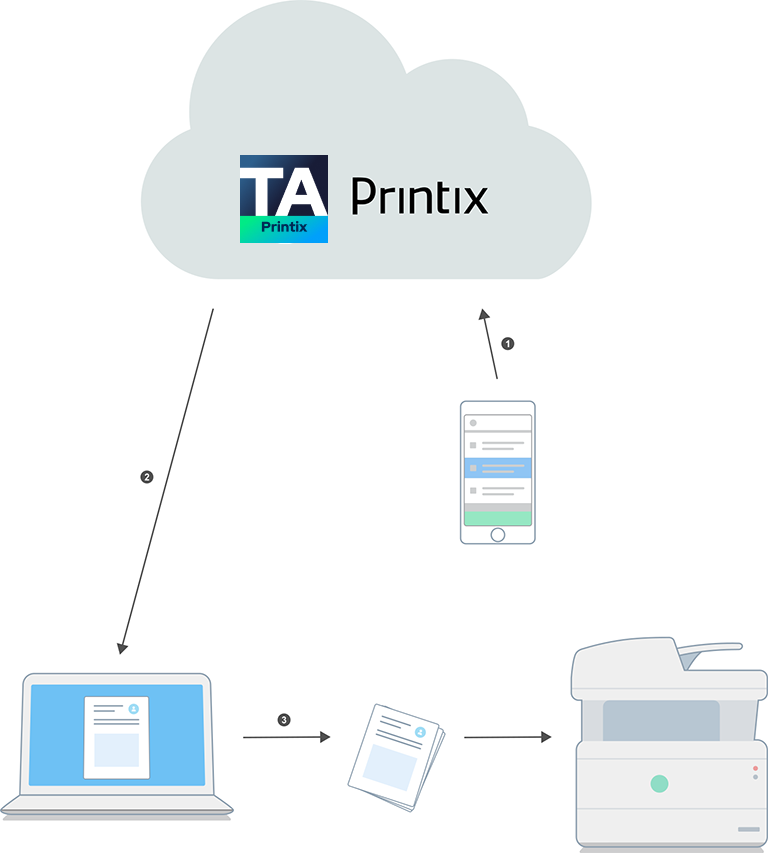How Printix works
The Printix Cloud Print Management Service is established by deploying the Printix Client on your computers (Windows and Mac).
Print driver management
Any printer discovered on your network is displayed to you in our web interface, the Printix Administrator. Your configuration data is stored securely in your Printix Home in the cloud, and so are print drivers that Printix Client uploads to your Printix driver store. Your Printix Client only works with your Printix Home, and users are required to sign in before use.
Print-ready convenience
-
Add, modify, and delete print driver configurations to configure:
-
Device settings (Paper trays, Duplexer, Stapler, Hole punch, and Output bins)
-
Printing defaults (Finishing options, Print 2-sided, and Print in black)
-
-
Remotely add, update, and delete Printix-managed print queues.
-
Use groups to deploy and grant exclusive access to printers based on users' group membership.
Printing
The secure and flexible methods of printing with Printix are achieved by having the Printix Client temporarily store print data encrypted on the computer and informing the Printix Cloud about the document. Users can print directly (as usual) or they can print securely and release documents from the Printix App on their phone, tablet, and computer. On printers with Printix Go, users can sign in with card or ID code and release their documents. Pending documents can also be stored in your own, secure cloud storage (Azure Blob Storage or Google Cloud Storage).
Behind the scenes, the process of releasing a document is as follows:
-
The Printix App sends a request to the Printix Cloud to release the document.
The user's record of pending documents is analyzed to determine where the document is stored.
-
Printix Cloud forwards the request to the Printix Client on the user's computer.
-
The Printix Client on the user's computer decrypts the print data and sends it to the designated printer.
Capture and workflow
On specific MFPs with Printix Go, you can enable and use Printix Capture to deliver scanned documents to your selected workflow destination. Alternatively, use the Printix App on your phone to capture and deliver images to your selected workflow destination. The scanned documents are encrypted while they are delivered and stored. Tungsten Optical Character Recognition (OCR) cloud technology is used to digitize your paper documents and deliver these as searchable PDF or Microsoft Word files. Workflow destinations include connector, email, Microsoft OneDrive, and Microsoft SharePoint Online.
You can configure capture workflows to deliver captured images directly to a destination without modifications.
See also: How to get started with capture and workflow.

